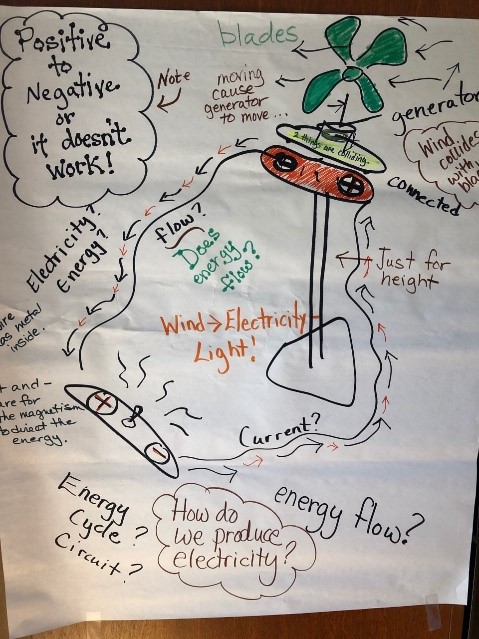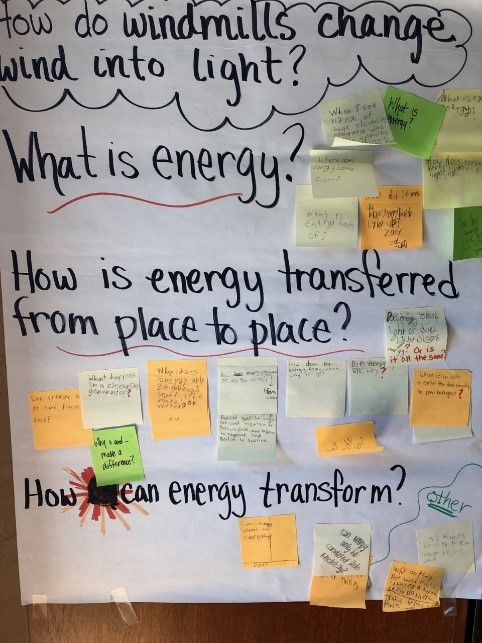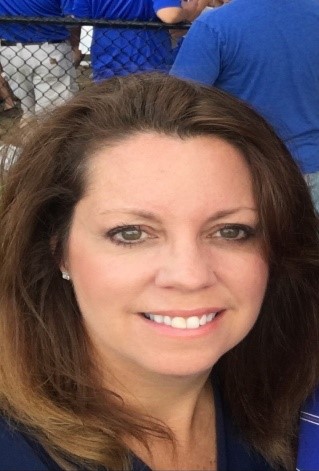Helping Students Take Control of Their Learning
By Cindy Abel
Posted on 2019-07-17
I am responsible for teaching my students how to think, learn, solve problems, and make informed decisions. I firmly believe that science is everywhere and affects all aspects of our daily lives, from the food we eat to the way we communicate. For these reasons, I have always made time for science in my classroom, alongside reading and math, and the more science I taught, the more connections between science and critical-thinking skills I realized.
For many years, my classroom was filled with carefully orchestrated experiments meant to excite and engage my students and guide them toward a preset conclusion. I was a master at linking concepts in science so my students could predict and understand my predetermined outcomes. I alone decided what I wanted them to learn and investigate. My strengths, weaknesses, and questions became theirs; unintentionally, I had eliminated their voice and replaced it with my own. I didn’t realize my flaws until I learned about the instructional shifts in the Next Generation Science Standards (NGSS).
When I was asked to travel to Nashville to help pilot a newly written fourth-grade curriculum based on the NGSS, I jumped at the chance. The NGSS were new to me, and I not only hoped to learn more about them, but also to score some free science materials.
Through this piloting opportunity, I learned that my core belief in the importance of science instruction was correct. According to the National Research Council (NRC) of the National Academies, “Understanding science and engineering, now more than ever, is essential for every American citizen.” The NRC’s A Framework for K-12 Science Education also states that “some knowledge of science and engineering is required to engage with the major public policy issues of today, as well as to make informed everyday decisions….In addition, understanding science and the extraordinary insights it has produced can be meaningful and relevant on a personal level, opening new worlds to explore and offering lifelong opportunities for enriching people’s lives.” (NRC 2012)
Although my core beliefs and teaching instincts were correct, my science practices were not. I learned a whole new way of teaching that turned everything I thought I knew about teaching science on its head, and it was all so simple: Let the students take control of their own learning.
Through the pilot, I was introduced to phenomenon-based teaching as a staple of the NGSS. The use of phenomena and student questions about phenomena are important shifts in three-dimensional learning. I began using anchor models and Driving Question Boards as vital instructional tools in my classroom. These models were not the well-crafted artistic showpieces I had used in the past, the ones I hung in a well-lit area and hoped students referred to on tests. Instead these “new” anchor charts are critical working documents, created with student ideas, that students continually refer to and update throughout the unit of study; these anchor charts chronicle my students’ progression of learning.
Before we begin to create the class anchor model, I introduce my fourth-grade students to an anchor phenomenon, such as the many rock layers of the Grand Canyon or how a windmill can harness wind and change it to light. Students create initial models individually, trying to explain the phenomenon on their own. Next they discuss and edit their work with a small group of peers. Finally, the class comes to a whole-group consensus and creates a class anchor model to explain the mechanism of the phenomenon.
I facilitate this process by using a whole-group discussion format. When one student suggests an addition to the model, classmates give a “thumbs-up” or “thumbs-down” signal to indicate whether they agree or disagree with it. If someone disagrees, we open the floor for discussion until we reach an agreement. As we try to model the phenomenon, students realize they don’t yet have all the information to make sense of what is happening.


Driving Question Boards (DQBs) are in every module I teach. They are a staple of my NGSS classroom and underscore that student ideas drive the learning. A DQB is a living document that we refer to, update, and add to. On it, kids post their questions, their prior knowledge, and their observations about the anchor phenomenon. The DQB grows with the students’ learning.
Students write questions they have about the anchor phenomenon on sticky notes. We post them on a classroom chart and look for similarities among the questions, ensuring that every student participates and every voice is heard. Next we group the questions into three or four “big” questions that the entire class can investigate further. During this process, as students drive instruction through questioning, they become more engaged and improve their understanding of science as they work to make sense of the world around them.
Throughout the unit, we complete investigations to gather evidence and find answers to our questions. When students have drawn evidence-based conclusions from their investigations, we apply the new information to the anchor model and revisit the DQB to resolve earlier questions and add new questions. We repeat this process until all our questions have been answered and students can make sense of the anchor phenomenon.
My classroom has become more student-centered: Students take ownership of the science concepts they discover and responsibility for the acquisition of new knowledge and understandings. Simply put, my students take control of their own learning. When students go public with their ideas, they are placed in the drivers’ seat, which opens new worlds for them to explore. I empower them to become critical thinkers and prepare them to collaborate with others as they learn to make informed decisions in their everyday lives.
Reference
National Research Council (NRC). 2012. A framework for K-12 science education: Practices, crosscutting concepts, and core ideas. Washington, DC: National Academies Press.

Cindy Abel teaches fourth grade at Robert C. Hill Elementary School in Romeoville, Illinois, a suburb of Chicago. She has a bachelor’s degree in elementary education from the University of Illinois at Chicago and a master’s in education from National Louis University. Abel resides in Plainfield, Illinois, with her husband and two children.
Note: This article is featured in the July issue of Next Gen Navigator, a monthly e-newsletter from NSTA delivering information, insights, resources, and professional learning opportunities for science educators by science educators on the Next Generation Science Standards and three-dimensional instruction. Click here to sign up to receive the Navigator every month.
Visit NSTA’s NGSS@NSTA Hub for hundreds of vetted classroom resources, professional learning opportunities, publications, ebooks and more; connect with your teacher colleagues on the NGSS listservs (members can sign up here); and join us for discussions around NGSS at an upcoming conference.
The mission of NSTA is to promote excellence and innovation in science teaching and learning for all.
Disclaimer: The views expressed in this blog post are those of the author(s) and do not necessarily reflect the official position of the National Science Teaching Association (NSTA).
NGSS Phenomena Teaching Strategies Elementary


